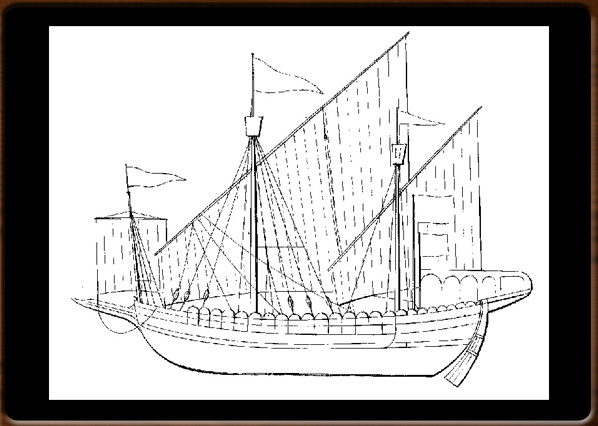
Venice dominions and trades route in 15th and 16th century

Cocca. Large transport vessel.

Venetian comercial galley.

The Anseatic league.




No video
The ports of the Italian city states along the Tyrrhenian coast did not see that many Venetian ships, as the coast was, until at least the 1400s, under the rule of the Maritime Republic of Genoa, for many years Venice’s enemy. The only safe harbours were the ports in West Sicily and Sardinia, where Venetian ships loaded huge cargoes of salt.
This was a highly precious substance at the time; indeed, the Republic of Venice encouraged all salt imports to such an extent that it made it mandatory for all merchant ships to include a certain quantity in their cargos.
Further west, the Balearic Islands also produced a lot of salt, which was promptly loaded on Venetian cocche.
Venetian merchants bought fine wool in the ports along the southern Mediterranean coast, in the so-called “del Garbo” countries (the North African Maghreb). This wool was then re-exported to the weaving centres in the "Po" Valley.
A new armed mude was opened in 1344. This went to Aigues-Mortes in Gard, France’s main Mediterranean port at the time.
That same year, more routes to Britain and Flanders were added to the one already in use since 1311. Thanks to these, involving the need for convoys capable of facing the Atlantic Ocean and the seas of North Europe, Venice started to build larger stronger galleys with a max tonnage of 250.
These mude created new sailing lines and trade routes so that Venetian fleets regularly controlled trade between South and North Europe: after passing through the Strait of Gibraltar with a stop at Ceuta, the merchant ships sailed to Southampton in Britain and Ostend and Antwerp in Flanders, right up to the border of another coastal trading area controlled by the cities forming the Hanseatic League, which operated in the North Sea and the Baltic Sea.
The ports along the south coast of England and in Flanders served many of North Europe’s major cities, where important trade fairs where held. Here the Venetians bought wool and cloth and sold their cargoes of products from the East (spices, precious/semi-precious stones and silk).
In the early 1700s, when the cheaper lace from Bruges, Gand and France entered the international markets, the demand for Burano lace fell dramatically leading to a recession in the Venetian lace industry.
1300 - 1400 - - rev. 0.1.6